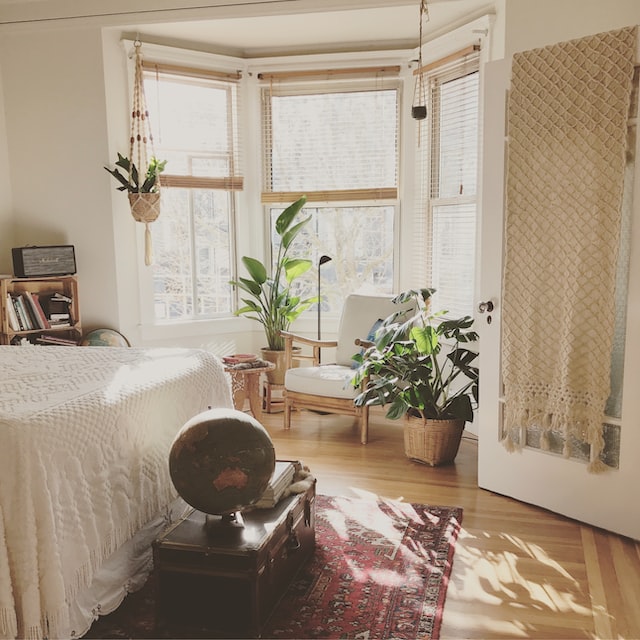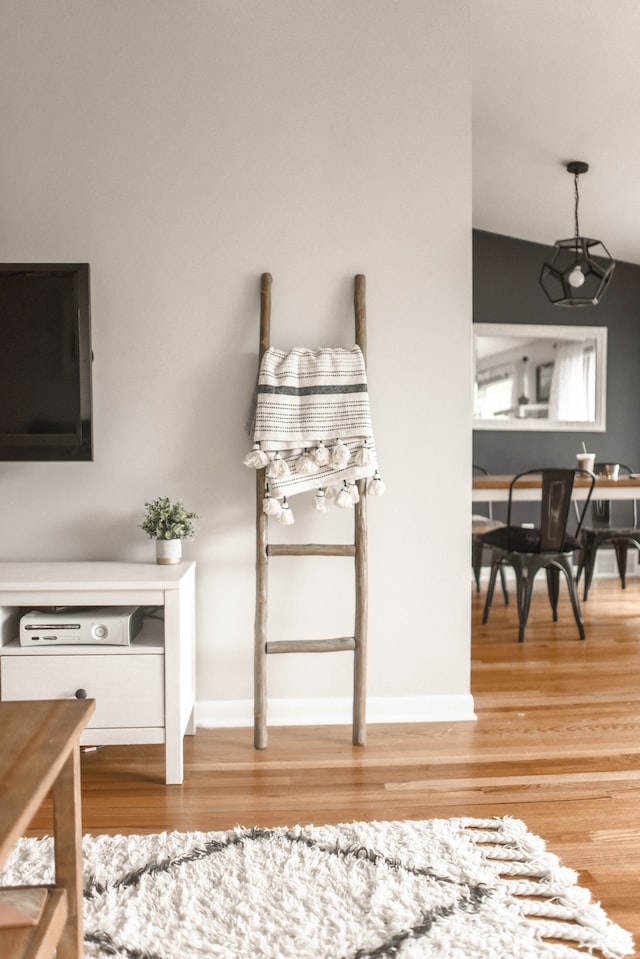Moldings like crowns and baseboards are just ornamental. Picking the perfect color for your baseboards and crown molding will give your room a finished look that reflects your style and expresses your preferences. However, there are a number of distinguishing characteristics that separate crown molding vs baseboard.
Let’s find out here the difference!
What is Crown Molding?
Crown molding, originally designed to conceal the seam between the ceiling and the wall, has developed into a sophisticated architectural flourish. It’s versatile and may be found in either wood or plastic; it’s used all over the house. Ceiling and wall imperfections can be concealed, the value of the home can be raised, the walls can be furnished, and the room can be given a refined appearance.
What is a Baseboard?
The baseboard is installed at the wall’s floor intersection. It serves two important purposes: it covers the joint and shields the floor from damage caused by sweeping implements. The most common materials for baseboards are wood and plastic. Colored plastics are readily available, while hardwood baseboards can be painted to complement the decor of any room.
Crown Molding vs Baseboard – How do They Differ?

The biggest difference between crown molding and baseboard is how it is installed. The crown molding shouldn’t be flush with the wall, but rather at an angle to the baseboard. Since baseboards are so straightforward to fix, they tend to be preferred over crown molding.
Baseboards are not only aesthetically pleasing but also serve functional purposes. It serves multiple functions, including as a shoe rack and a shield for the floor’s seams and the wall’s studs.
Can You Use a Baseboard as Crown Molding?
Using baseboards as a substitute for crown molding is not unprecedented. The baseboard’s intended application is the floor-wall junction, so installing one there is recommended.
Because crown molding is meant to be fitted at an angle and a baseboard is meant to be fixed flat, the effects will be different if you choose a baseboard instead. Also, substituting baseboard for crown molding won’t provide the same effect.
However, crown molding can hide ceiling imperfections caused by shifting walls, while baseboards cannot. If you try to use the baseboard on the ceiling, it may crack due to a lack of central support, leaving you completely befuddled.
Crown Molding vs Baseboards: Good Alternatives for Each Other
Instead of using baseboards, you can utilize crown molding. Although this may be appealing at first glance, most experts advise against it because angled crown molding clashes visually with a floor that complements a flat baseboard.
Crown molding is typically made of denser foam that will degrade if dropped to the ground. Installing crown molding as a baseboard raises the risk of damage from pets and young children because of the angle at which it rests against the wall.
Crown Molding vs Baseboards: Of Same Color
The baseboard and the crown molding can be painted the same color to produce a unified look. As an alternative, you can use color to convey your individuality in terms of both style and personality. Painting the baseboards a darker color and the crown molding a lighter hue, for instance, can really set off the design.
The room will appear larger if the baseboards are painted a darker color, while the crown molding can be painted a brighter color to draw attention to the ceiling. Baseboards and crown molding can be painted to match the wall color for an additional decorative touch. Choosing a color scheme is a highly personal process that should mirror your own aesthetic preferences.
Differences Between Molding and Trim

To know the difference between crown molding vs baseboard, it is important to know first what sets molding unique from a trim. Trim and molding are great for finishing off a new house or giving a favorite space a facelift. The two can be used interchangeably to conceal flaws, bridge gaps, or soften the transition between otherwise jarring materials.
Although they both round off a room’s look, many interior decorators weigh the pros and cons of trim vs molding when making decisions. Both options have their advantages, but if you’re looking for a compromise between utility and comfort, the trim may be the way to go.
🞺 Types of Trim Molding
There are four broad types of trim molding, distinguished by whether they are used to finish off walls, ceilings, floors, or baseboards. Trim, called casing, is used to enclose gaps around doorways and windows.
To finish off a room’s look, baseboards are mounted along the floor, and crown molding is affixed to the wall just below the ceiling. Last but not least, any decoration that goes right onto a wall rather than around an aperture or a corner is called wall trim.
1-Window and Door Casing
Windows and doors can be given a more finished look by installing casings around them. In addition, they play a useful role. There is no need to worry about drafts coming through the wall when you install this trim around your windows and doors. In most cases, the casings around doors and windows are flat and can be attached simply.
2-Baseboard Trim
This piece of trim is used to conceal the seam between the floor and the wall. This trim has a wider base than it has a top. Thanks to its clever design, the wall is shielded from potential damage caused by a vacuum, broom, or other cleaning implements.
3-Ceiling Trim Molding
Molding for the ceiling serves a similar purpose to baseboard molding, only it conceals the juncture where the wall meets the ceiling. The most popular kinds of ceiling molding are cove, crown, and bed. When this sort of trim is put up, it is generally accepted that wider molding will provide the illusion of a lower ceiling.
4-Wall Trim Molding
Wall trim refers to the decorative molding that is attached to the walls in places other than window and door frames, and the corners of the ceiling and floor. Due to its placement on walls, wall trim is more decorative than practical. The chair rail or wainscoting are exceptions to this rule since they shield the wall from harm. Chair rails were originally used to prevent chairs and other furniture from damaging walls, as their name suggests.
🞺 Common Trim Materials
The types of materials used to construct trim are another common descriptor. Wood has been used for centuries, and it remains one of the most popular trim materials today. However, there are many more possibilities available.
What kinds of trim materials you can utilize depends on your available funds and the final look you’re going for. Staining the trim or leaving it in its original state are also viable options, making bare wood the best choice in many cases.

✔ Bare Wood
It is up to you to choose the specific kinds of trim that will be used in your project. In order to dye the wood or achieve a more natural appearance, bare wood should be used. Poplar, pine, fir, oak, and aspen are some of the more common options for wood types.
✔ Prime Wood
Since less expensive wood can be used and finger joints can connect shorter lengths of trim, primed wood trim can sometimes be purchased at a discount. The disadvantages of using unfinished wood are reduced. By eliminating the drying period for the primer, prefinished wood speeds up the construction process.
Primed trim makes it simple to see imperfections like nail holes and dings before they’re painted over. Moreover, primed trim is even easier to cope with because the stark contrast between the unfinished wood and the finished paint job makes the profile line more obvious. Don’t buy unfinished wood if you plan on painting it.
✔ Wood Composite
Composite wood trim is a hybrid material that incorporates wood fibers, phenolic resins, and wax. They are factory primed and may be cut like wood. Exterior trim options that mimic the look of wood, such as wood composite trim, are not limited to real wood alone. The fact that it retains paint better and for longer than even the highest-quality exterior wood means that you’ll save time as well as money in the long term.
✔ Medium-Density Fiberboard
As the most cost-effective material, medium-density fiberboard is frequently used as molding. However, it is not without its problems. There is a decline in MDF’s performance in damp and humid environments. Low-cost MDF (medium-density fiberboard) works well for painted trim, but only if it will be kept in a dry environment.
Installing it close to the ground or near windows, where water and condensation may collect, is asking for trouble. In a short amount of time, the MDF will absorb it like a sponge, swell, and peel paint. If possible, stay away from MDF in damp areas.
🞺 PVC Trim
Exposed to the elements, PVC trim is where it shines. It’s durable in the face of both water and sunlight. That’s why it’s a viable solution for use in the great outdoors. PVC molding may be sawn virtually as easily as wood.
Price-wise, it’s on par with knot-free wood. Unlike wood, PVC doesn’t need to be painted because it already exists in a wide variety of colors. It is equally at home on either the inside or the outside.
Crown Molding vs Baseboards: Process of Installation
Most people’s first thought is to call in a contractor to help them with installing crown molding vs baseboards. But, in reality, you can do it all on your own. If the space isn’t too intricate, that is.
No special tools or materials are required, and the project may be finished in a day or two. To assist you with putting up the crown molding vs baseboard below is a how-to:
1-Determine the Need
If you’re thinking of adding trim to your home, the first step is to make sure you actually need it. Think about how the space will appear with the new trim once you’ve looked around and defined the various transitions. In this first phase, you’ll select the crown molding baseboard style, color, and materials that will best complement the room. Just like crown molding in a bathroom.
2-Measure the Room
Once you’ve figured out the room’s trim details, you may measure it with a tape measure, a pencil, some paper, and a camera. You should also draw a little schematic, making sure to highlight the angles formed by the walls’ intersections.
Additional Ways to Use Crown Molding
Now that we’ve established that crown molding can’t be used as a baseboard, you’re probably asking if there’s any practical application for it. The crown molding, or ceiling trim, has several functional uses making the crown molding distinguishable vs the baseboard. Among them are some of the following:
✔ Dressing up Cabinet
The soffits of cabinets are the vertical surfaces that protrude from the underside of a ceiling. To hide the unsightly soffit, install crown molding here. You won’t need a garage full of equipment to finish this task. It’s a simple job that can be finished with just a few nails, a hammer, some wood filler, and a miter box.
✔ Beautifying the Doorway
Putting up crown molding above a doorway can give it an elegant look. Simply position the crown molding in the area above the door. The improved aesthetic effects and refined style are a direct result of the added molding.
✔ Framing a Window
Installing crown molding around window frames may make a space feel more open and cheerful. The crown molding can double as a window curtain for a more refined appearance.
✔ Above the Storage Shelf
Adding crown molding to a plain bookcase can instantly elevate the look and feel of the space.
Alternatives to Crown Molding as Baseboards

Checking out whether crown molding can be utilized as a baseboard is something you might want to do if you’re searching for a replacement for the baseboard, which is a common practice. You will most likely not sustain any injuries under those conditions. In addition to its usefulness as a baseboard, it has a number of other fascinating potential applications throughout the house.
If you’re looking for an alternative to crown molding, consider these options:
1-Shadow Line Trim
Using shadow line trim, you can dispense with the need for molding in the form of baseboard, crown molding, or any other trim. If you want to avoid using trims, you can outline the area normally framed by them with a thin space instead.
2-Drywall Return
You can get rid of the baseboard crown molding and use a drywall return instead. The wallboard is continuous from the floor to the ceiling, with no seams or other interruptions along the way. The primary application of drywall returns is in commercial construction, where they can be used to save money on trims. Drywall construction costs might be the same as, or even more than, trim installation costs in some circumstances.
3-Medium Density Fireboard
Medium-density fireboard is a composite material that can be used as an alternative to hardwood baseboards since it is both cheaper and resistant to mildew and mold. Places that frequently experience water incursion are ideal candidates for their utilization.
4-Use Wainscoting
If you want a baseboard that resembles crown molding at all, wainscoting is your best bet. Creating a baseboard entails installing trim along the bottom of a wall. Up to the height of the chair, in fact. Wainscoting is adaptable to any type of home design, despite its lack of popularity in contemporary construction.
Frequently Asked Question
Q: Which baseboard paint do you use, and where can I find it?
Select a semi-gloss finish for your baseboards if you want something that will hold up better to wear and tear and be easier to maintain. Choose a glossier finish than the walls to draw attention to the molding.
Q: What’s the deal if some brand spanking new houses don’t even bother with crown molding?
The crown molding that was added was a nice touch. Due to higher material and labor expenses, installation is more costly. Crown molding is typically not included in mass-produced houses unless the buyer specifically requests it. This can make you think that it’s simply out of style.
I don’t think crown molding will ever go out of style. However, the details and proportions may alter as time goes on, and tastes change. In the past, it was common practice to decorate practically every room with intricate moldings. Imagine yourself on a tour of a historic house.
Q: What room should have crown molding?
In most cases, molding is considered a decorative enhancement. It’s more expensive because of the materials and time required to make it, put it in place, and paint it. It’s possible to make even the most basic square room into a sumptuous retreat.
Wrapping Up
Knowing the differences and functions of crown molding vs baseboard may help a lot in using them in their intended application. Crown molding is used to embellish the tops of walls, columns, and cabinets. A baseboard is a decorative material that goes along the floor and up the walls to hide the seam. Neither component is preferable to the other, as they complement each other nicely.


